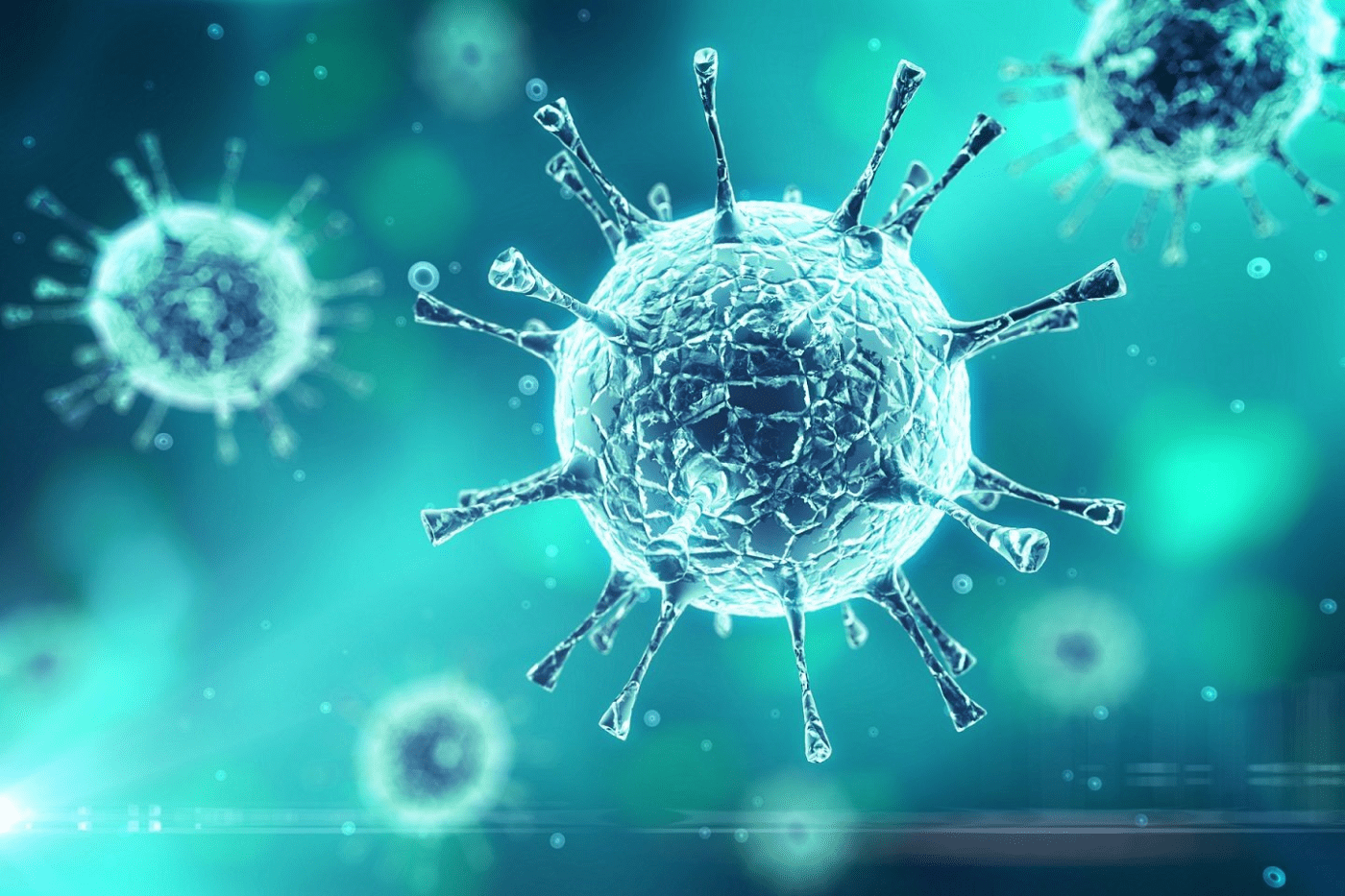A surprising role of viruses
Although often associated with causing disease, viruses also have important ecosystem functions.
It has been suggested that marine viruses could play a role in annual cycles such as spring phytoplankton bloom crashes. Phytoplankton are microscopic algae that can form spring blooms so large they are visible from satellites. However, at high densities they can deprive other organisms of nutrients and block sunlight from reaching deeper waters. Viruses spread rapidly in dense populations, causing blooms to crash suddenly at the end of the season. In this way, viruses regulate ecosystem dynamics to ensure no one species, or population, dominates. Unfortunately, we are not immune to environmental forces either, with viral pandemics among humans likely to become more frequent as community density and interconnectedness continue to increase.
It is estimated that an incredible 10% of the modern human genome is of viral origin
SARS-CoV-2, the virus that causes Covid-19, is an RNA virus, just like the majority of viruses that infect humans, animals, and plants. RNA is a genetic molecule similar to DNA, but less stable and more vulnerable to enzyme damage and mutations. DNA is thought to have evolved from it into a double-stranded molecule that could replicate genetic information accurately and resist mutating, which could prove fatal in living organisms.
Viruses are sequences of genetic information – either DNA or RNA – encased in a protein coat, and require a host cell in order to produce energy and replicate. For this reason, viruses are not thought to be alive, and have instead been described as ‘organisms at the edge of life’. To reproduce, a virion (a single viral molecule) must penetrate a cell and hijack its reproductive machinery, which then churns out billions of viral copies that infect more cells.
While inside the cell, viruses sometimes insert themselves into its DNA. Scientists believe that all living organisms carry viral DNA embedded into their genome, remnants of viruses that infected their ancestors. It is estimated that an incredible 10% of the modern human genome is of viral origin, most of which has mutated to the point where it is no longer harmful or infectious. Some of these sequences even have beneficial functions, such as preventing cancer and creating the placenta in pregnant mammals.
Both viruses, and the deep oceans from which they came, hold many mysteries to science
Along with life forms, viruses first evolved in the sea, probably near cracks in the crust of the ocean floor known as hydrothermal vents. Many of these openings release currents of warm water heated by the Earth’s core, along with dissolved minerals. Experiments have shown that these minerals react with each other using heat energy to form ribonucleotides, the building blocks of RNA, and can spontaneously combine to form short sequences. These discoveries have come as recently as this century. We still have a lot to discover about the deep oceans.
Since viruses have the potential to wipe out entire populations, some life forms have evolved strategies for limiting viral spread. Quorum sensing is used by certain bacteria to detect when its population has reached a certain density and cease dividing. The technique works akin to the physical distancing we have been doing over the last 6 months, limiting the opportunities for virions to jump host by isolating each organism until either the infection has been fought off, or the host dies.
Both viruses, and the deep oceans from which they came, hold many mysteries to science. This most recent pandemic may encourage more generations of scientists to explore the fascinating world of viruses and their uses as well as problems.

Comments